
Published:
Readtime: 10 min
The Lowdown:
Glenfiddich Distillery
Every product is carefully selected by our editors and experts. If you buy from a link, we may earn a commission. Learn more. For more information on how we test products, click here.
What a great time we just had in Dufftown, Scotland, sipping down drams in the company of local legends like coppersmith Dennis McBain—who’s been wielding his hammer since the 1950s—and archivist Andy Fairgrieve of the long dreadlocks and photographic memory. The purpose of our journey was to score an exclusive look at House of Hazelwood, a rare whisky collection from the same family behind Glenfiddich and The Balvenie. But what is House of Hazelwood, exactly? Here’s everything to know.
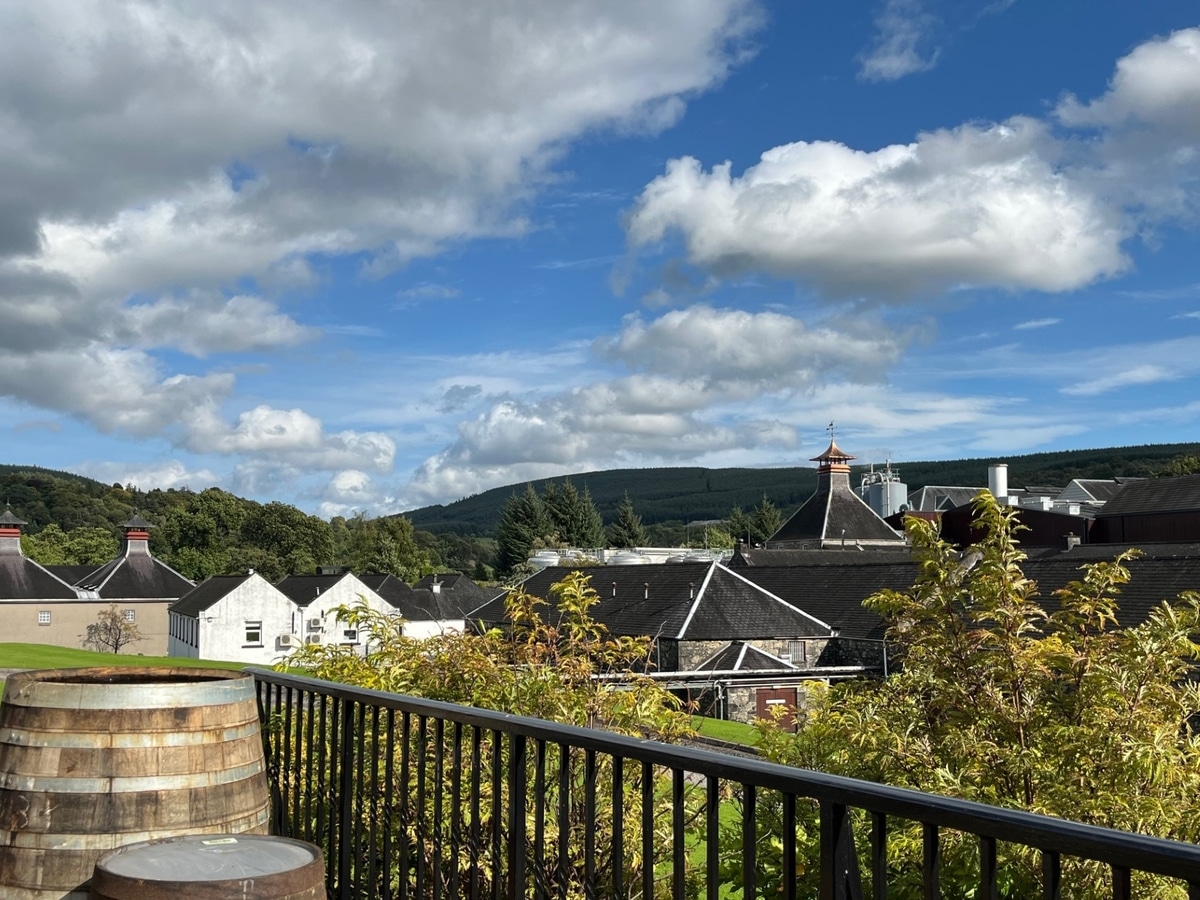
A Tale of Two Distilleries and One Huge Family Tree
If you drink Scotch whisky, then you’re familiar with Glenfiddich and The Balvenie, two long-running distilleries that sit right next to one another in the rolling hills of Dufftown (aka the ‘Malt Whisky capital of Scotland’). What you might not realise, however, is that both distilleries have been family-owned and operated from their founding up to this very day. That makes them rare exceptions to the modern norm, whereby every other whisky maker of their size has been swallowed up by a conglomerate.
To go back to the start of Glenfiddich and The Balvenie is to uncover a bromance for the ages. On one side is founder William Grant (of William Grant & Sons) and on the other is schoolteacher turned business partner Charles Gordon. The bond was so strong between these two men that their offspring ended up marrying one another, thus planting the roots for a massive family tree with ongoing leadership ties to both distilleries.
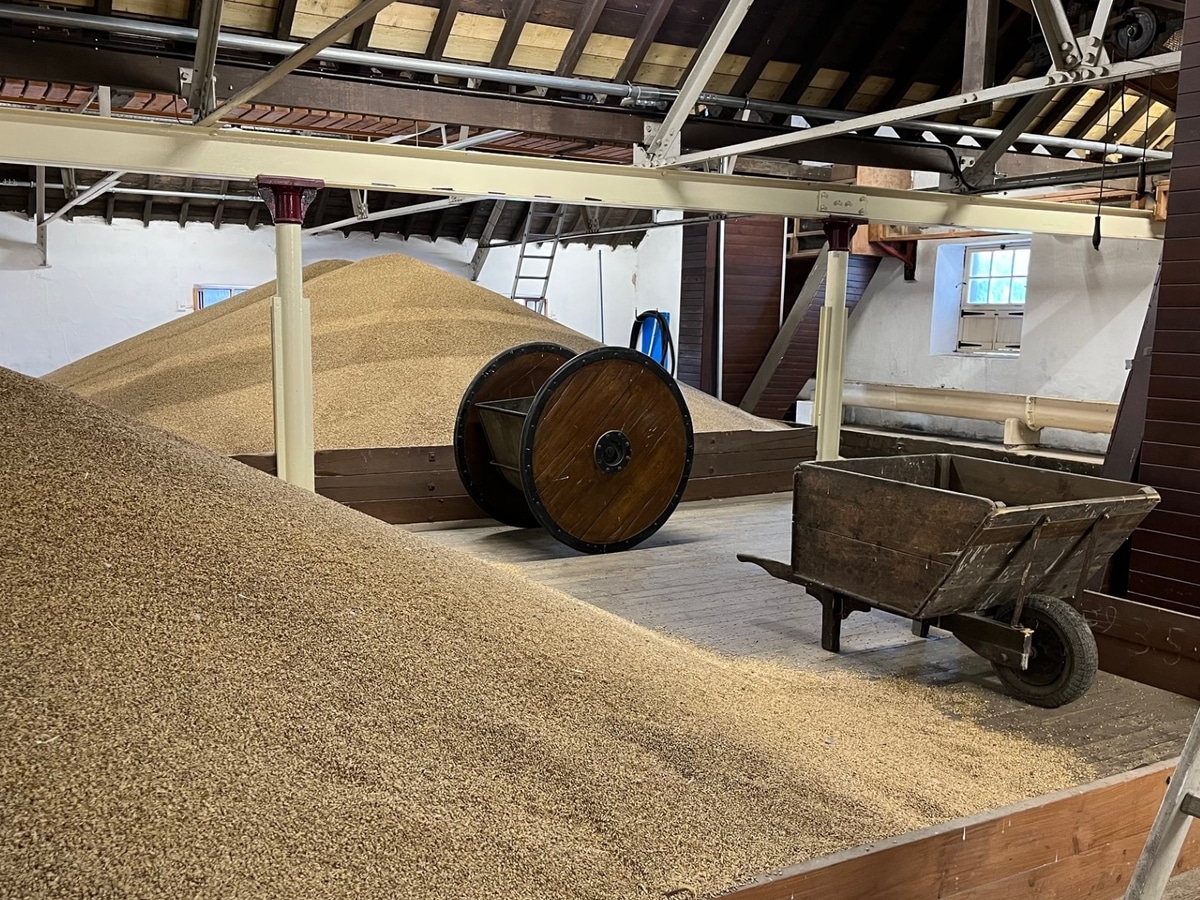
In the 1960s, brothers Charles Gordon and Alexander “Sandy” Gordon—both direct descendants of William Grant—were overseeing daily operations. It was under their guidance that Glenfiddich became one of the biggest names in Scotch whisky around the globe, and is credited with creating the ‘single malt’ category (an industry game-changer if there ever was one).
According to legend, Charles and Sandy Gordon were two men of wildly different temperaments. Whereas Charles was a globe-trotting thrill-seeker with a consummate passion for experience, Sandy was far more practical and business-minded. Yet one could argue that this yin and yang partnership is the exact kind of thing that leads to innovation and success across virtually any field. They certainly found common ground with their shared love of whisky, leading to one of history’s biggest private collections.
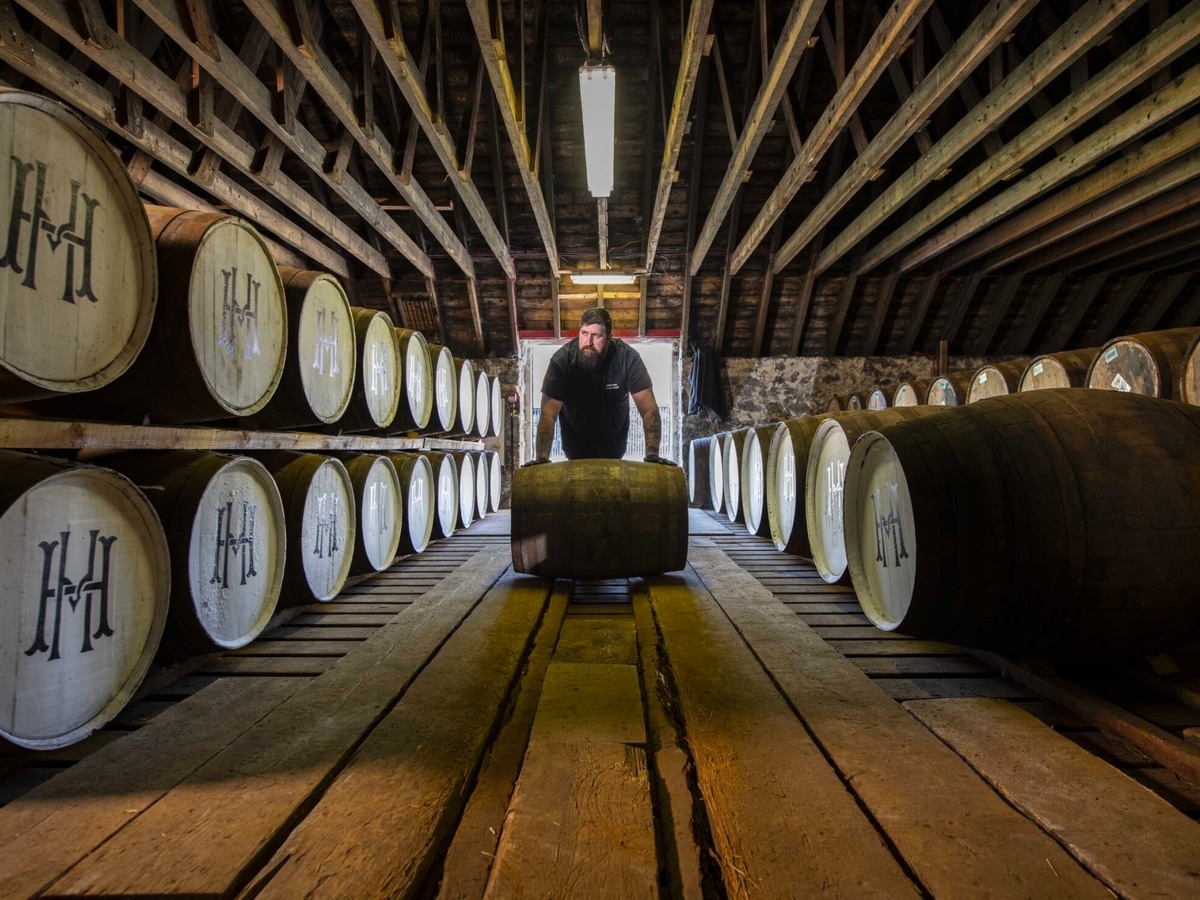
A Private Stash Goes Public
When you’re operating two successful distilleries, you tend to deal in a lot of liquid. This was especially true in the middle of the 20th century, a time when blending was the industry standard. Indeed, a traditional Blended Scotch can incorporate up to 30 or 40 whiskies at a time. It’s then no surprise that the Gordon brothers amassed an enormous collection of private stock from assorted distilleries during their tenure.
Even as Glenfiddich pioneered the single malt category, the Gordons were creating private blends behind the scenes over the span of decades. With spacious warehouses and limitless connections at their disposal, they accumulated more stock than they or even future generations could possibly drink in a lifetime. Most of it ended up sitting in the barrel for years and years, taking on new flavour dimensions as a result.
Charles Gordon passed away in 2013, followed by Sandy in 2020. Now that these two legends are gone, the time has come to make their once-private collection available to the public. Overseeing its release is the current generation of Gordon family members, who named the whisky after a family-owned estate just a few miles away from their distilleries. Meet the House of Hazelwood.
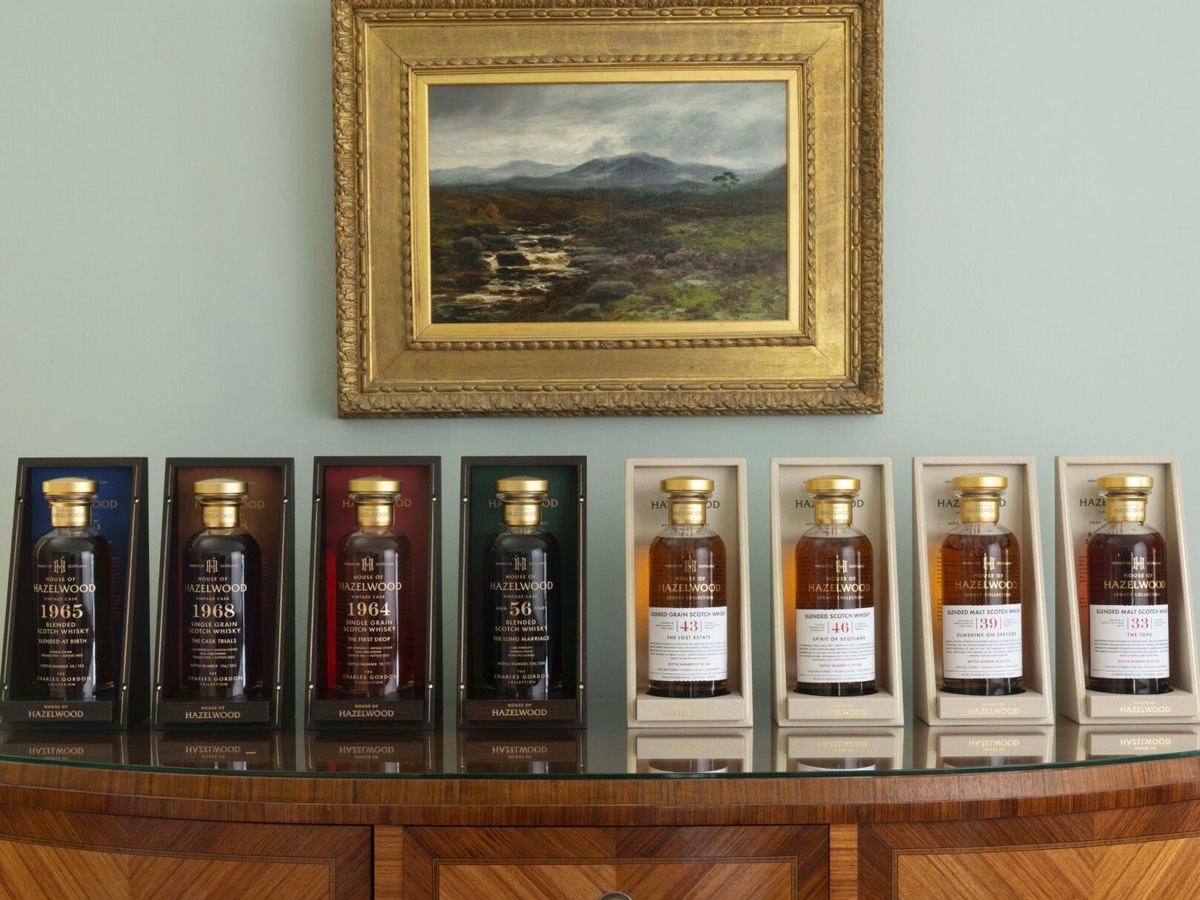
What is House of Hazelwood Whisky?
House of Hazelwood is an overarching range (consisting of the aforementioned private stash) but also a series of mini-collections, each one containing its own selection of limited-edition releases. That is to say, every newly discovered barrel or blend that’s deemed good enough to release receives an individual name—usually one that tells a story about its background—but also falls under the banner of a broader collection name such as The Legacy Collection or The Charles Gordon Collection. Once bottled and sold, that specific expression will never be available again.
As you might recall, House of Hazelwood is also the name of a private family estate (the Scottish can be quite literal-minded when it comes to naming). It was to this picturesque property that we travelled to sample a number of these rare expressions. All were non-chill-filtered and blended, though the range does include a handful of single-grain whiskies. Many are bottled at cask strength and no two sips were exactly the same.
Over the course of an unforgettable evening, we sampled the following releases:
- Sunshine on Speyside 39-Year-Old Blended Malt Scotch Whisky – A member of the Legacy Collection, this delicious dram vaguely imparted the qualities of fine cognac with its silky profile of mango, grilled pineapple, and grape.
- The Accelerator and The Brake 33-Year-Old Blended Scotch Whisky – This blend—also from the Legacy Collection—was created by legendary whisky writer Dave Broom. It draws heavily from unmalted grain and follows bold notes of vanilla with layers of baked apple, chocolate, and dates. Drink it with your eyes closed and you’d swear you were sipping on a premium bourbon.
- Blended at Birth 56-Year-Old Blended Scotch Whisky – This exquisite dram makes up part of the Charles Gordon Collection and offers yet another bourbon-like profile by way of huge vanilla flavour. Its closing note of fruity pear was possibly the most clearly defined finish we’ve ever encountered.
- The Next Chapter 50-Year-Old Blended Scotch Whisky – Here we have another whisky close to Charles Gordon’s own heart and from the collection bearing his name. It delivers a rich texture and generates a supreme balance between vanilla sweetness, orange citrus, and oak spice.
To say our tasting touched down across a full spectrum of flavours would be putting it mildly. Our personal favourites were probably the Sunshine on Speyside and Blended at Birth, if only because they offered such distinctive qualities. Some of the expressions were quite oaky at the finish, but still unlike any other Scotch whisky we’ve ever tried. It’s this prevailing sense of discovery and unpredictability that lies at the very heart of House of Hazelwood.
Given the limited supply, collectors might be tempted to purchase a bottle and leave it sealed (which has practically become a standard with rarer expressions), but to do so is to arguably miss the point. The Gordon family wants people to enjoy these whiskies as a celebration of both their ancestors and Scottish history itself. Speaking of history, a number of these blends incorporate liquid from ‘ghost’ distilleries—i.e. once active distilleries that no longer exist—making them all the more unique.
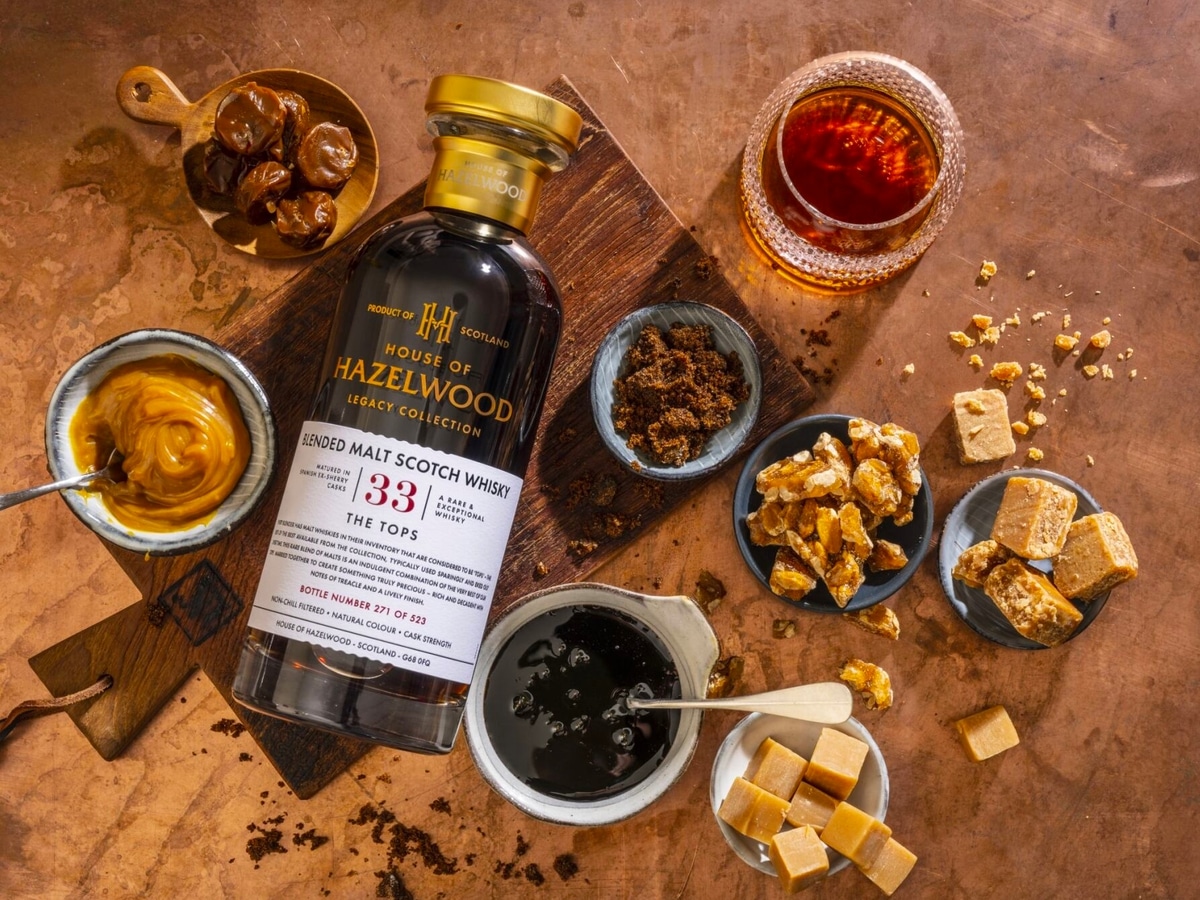
The Art of Blending
Why blended whisky? It’s a question one is bound to ask when brushing up against the House of Hazelwood, which is defying convention by releasing aged blends at a time when single malt dominates the premium market (all due respect to powerhouse blenders like Johnnie Walker). Adding a touch of irony is the fact that these whiskies come to us from the same family that introduced—and popularised—the single malt category in the first place.
So…why blended whisky? The answer is multi-tiered. For starters, House of Hazelwood made gentleman’s agreements with the various distilleries from which these whiskies were sourced not to release any of the stock as a single malt. But the more prominent reason is that Charles and Sandy Gordon came up at a time when blended whisky was still the industry standard.
What’s more, the Gordon family crafted a number of these blends with the spirit of experimentation in mind. They were looking for interesting flavour profiles that couldn’t be found just down the road or in the next region over. Could such a thing be achieved by taking another distillery’s single malt and running it through a finishing program? Not really, since that distillery could do the very same thing if they so desired. But with blending, one can go full ‘mad scientist’ to create something truly one of a kind.
So goes another question: is blending misunderstood? One wonders if the Gordon brothers unleashed a proverbial monster by touting the single malt as king when the truth is that spectacular flavour can be found anywhere. If anything, blending represents a complex balancing act between multitudes of whiskies and, therefore, is an art form unto itself.
To be clear, not every batch that the Gordon brothers whipped up was a winner. It’s for this reason that the family is only releasing the whiskies deemed successful by their experienced palates. As for the batches that don’t necessarily work right now, perhaps they will with a little more aging or with proper finishing in another cask. And so the spirit of experimentation continues.
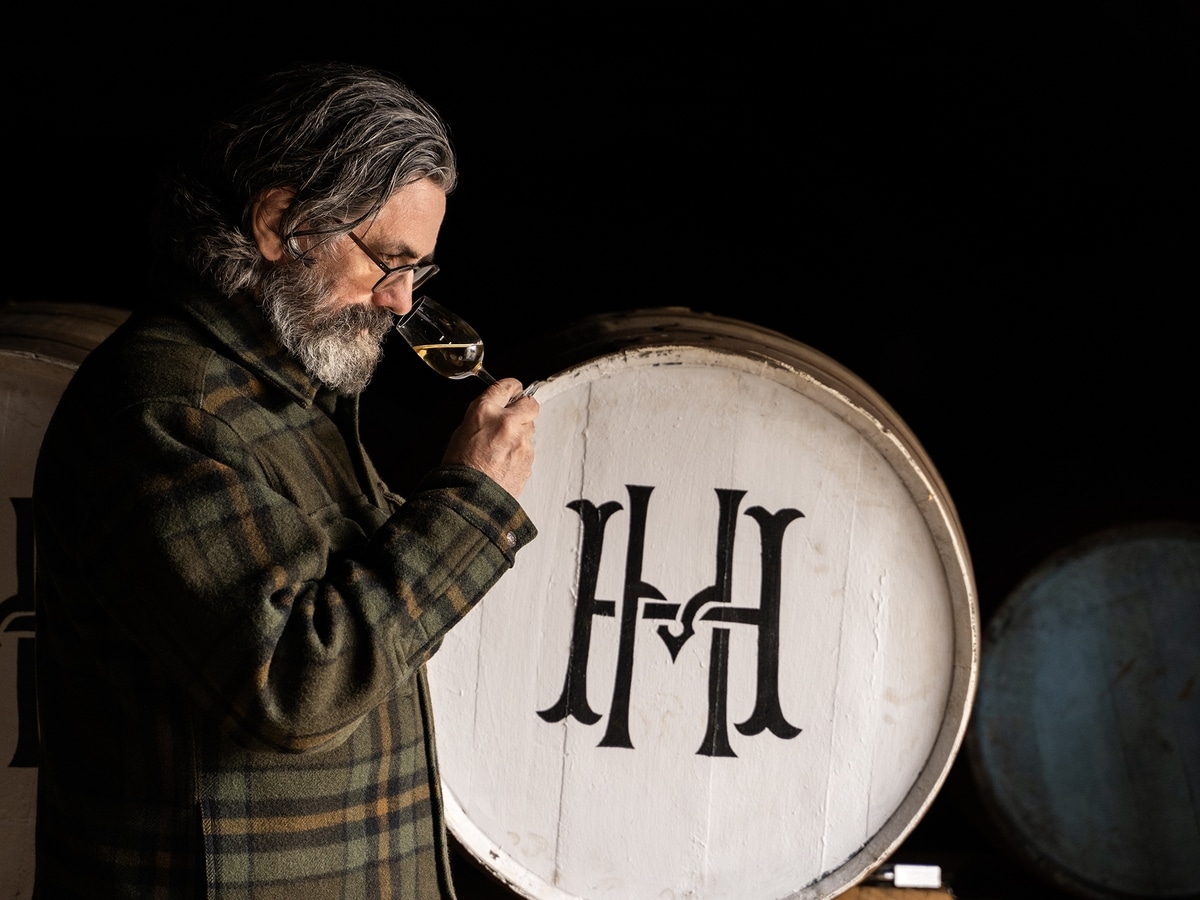
The Accelerator And The Brake Documentary
Renowned Scottish whisky writer Dave Broom was so taken with House of Hazelwood that he teamed up with the brand to make the mini-documentary The Accelerator And The Brake. Unfolding in chapters, the short film dives into the backstory behind this unique range and tours the house for which it’s named. Archival footage is interwoven with interviews with key players such as archivist Andy Fairgrieve and fifth-generation family member Kirsten Grant-Meikle.
During one of the film’s highlights, Broom is challenged by distillery manager Ian Miller to make a House of Hazelwood blend himself. Hence the creation of The Accelerator And The Brake, a 33-year-old Blended Scotch that—like everything else from the range—emanates with history and purpose. It was one among the many whiskies we sampled at the aforementioned tasting event and is currently available for purchase. Meanwhile, one can watch the film by clicking here.
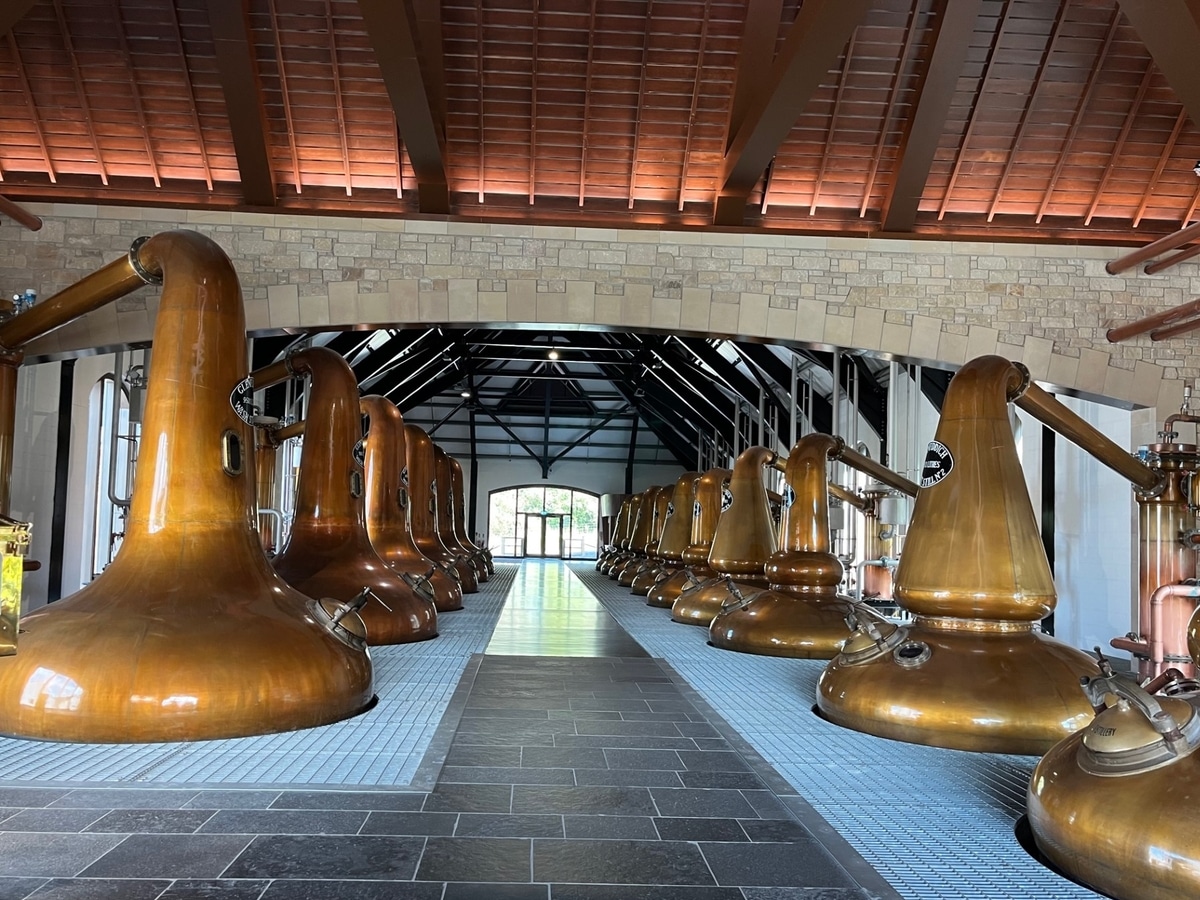
An Evolving Industry Landscape
If there was ever a time for House of Hazelwood to land, that time is now. Not only is ultra-aged Scotch whisky certainly having its moment, but the global market has never been more receptive to the possibilities of experimentation. The collection is all the more epic in scope when one considers the countless whiskies that were purchased and stowed away by the Gordon family over decades.
House of Hazelwood also makes up part of an industry landscape that continues to expand in every direction. For instance, there are far more women both producing whisky behind the scenes but also drinking it as consumers. There’s also a massive uptick in new micro-distilleries, many of which are sourcing their whisky elsewhere while their own spirit spends more time in the barrel. At the same time, existing icons like Glenfiddich have built brand-new facilities to keep up with growing demand.
Despite the proliferation of upstart distilleries and limited-edition releases, House of Hazelwood exists in a realm of its own. With patience, time, and the art of blending has come a downright versatile range of one-of-a-kind whiskies, each one telling a unique story in name and taste alike. And unlike certain aged counterparts—which almost seem designed to remain sealed forever—this stuff is meant to be sipped.
House of Hazelwood whisky is available in key markets around the globe, including Australia.
Disclaimer: The author of this article, Jacob Osborn, was invited to visit House of Hazelwood as a guest of the brand, for the purposes of this article.
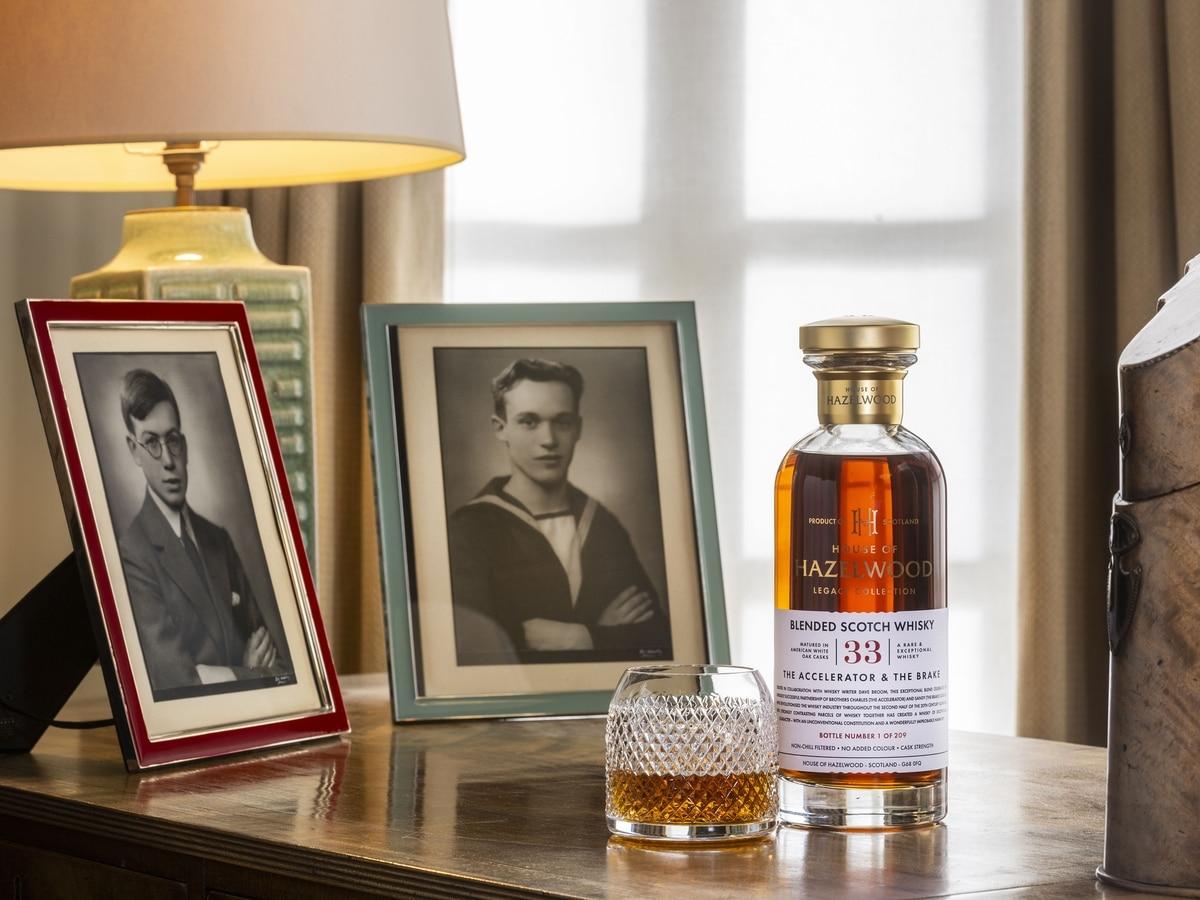



















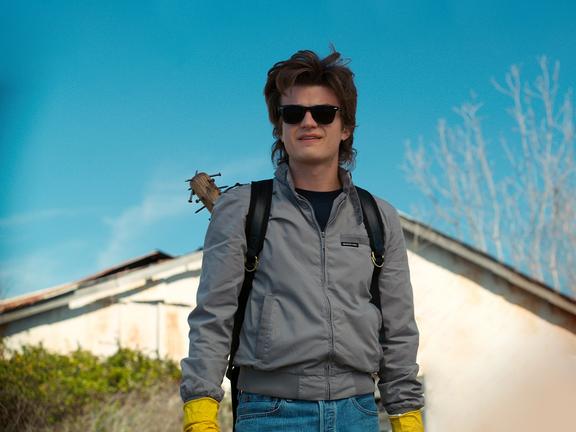



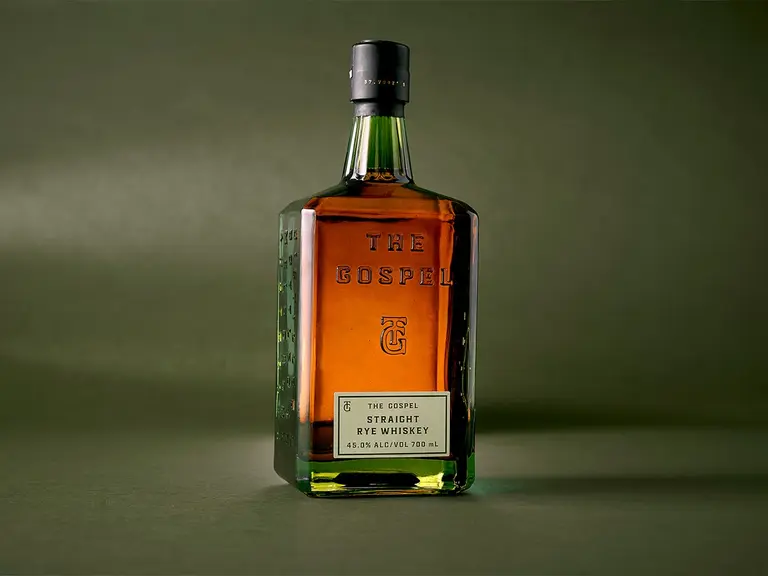



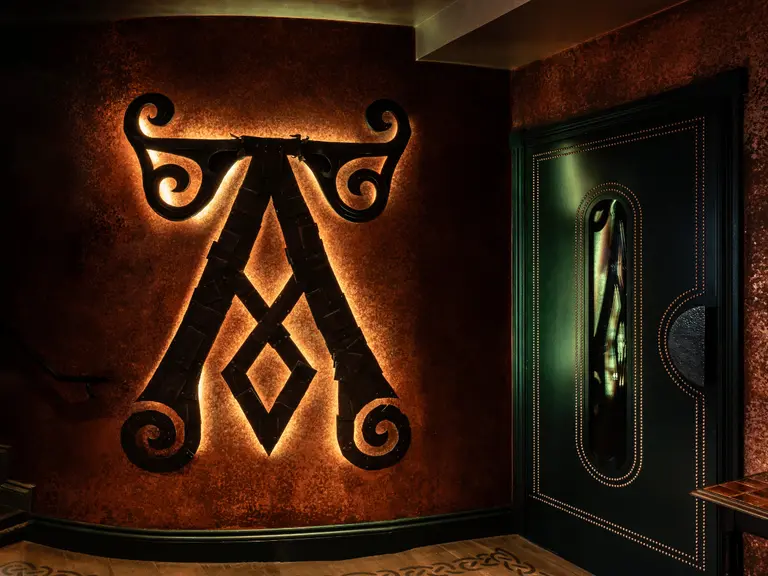


Comments
We love hearing from you. or to leave a comment.